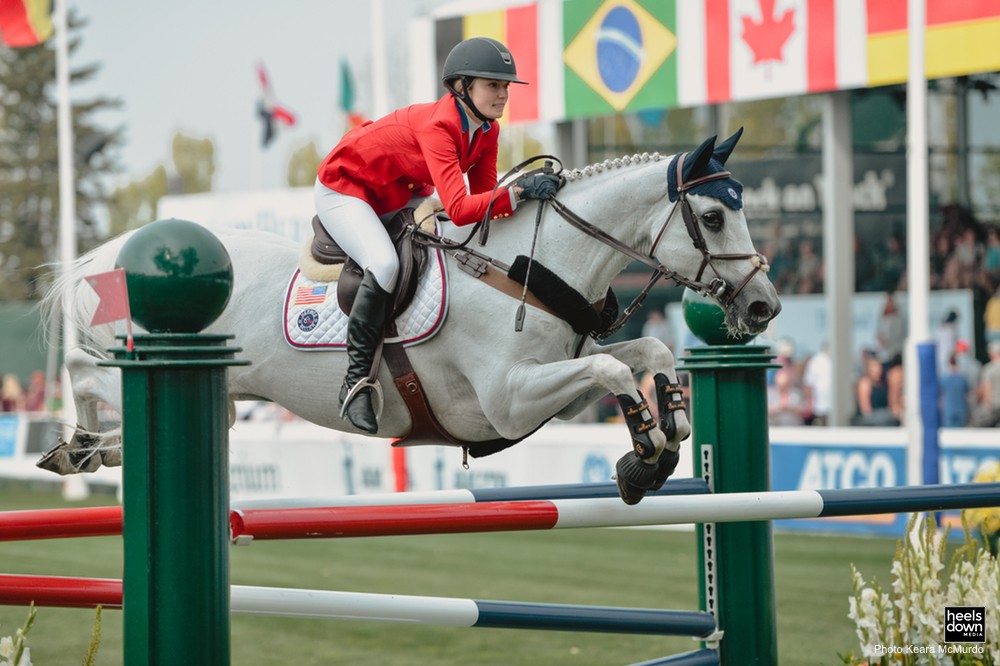Why Is Everything So Complicated in Equestrian Sports?

At its origins, horse sport was simple: it required a rider to pilot a horse from point A to point B in the fastest time. A few hundred years down the line and the use of horses in competition has spread to multiple disciplines, each with their own rules, quirks, complicated terms and a myriad of competitive series. It’s difficult enough to outline the basic elements of our sport to a newcomer, let alone explain the complexities. Which begs the question: if we want horse sport to appeal to the wider public, do we need to simplify our sport?
The sheer volume of competitions in the modern equestrian calendar makes it tricky for even a die-hard fan to keep track. There’s World Cups and Nations Cups with their own finals and qualification systems. There’s the Global Champions Tour and the newer Global Champions League; there’s Longines Masters and Event Rider Masters and World Dressage Masters, all of which have their own rules to master. There’s a Grand Slam in eventing and there’s a Grand Slam in show jumping, with bonuses along the way for one but not the other. There’s no such thing as a season anymore – equestrianism is an all-year-round endeavour with barely a pause for breath between shows.
The fact that these new series keep appearing is positive in that it shows the growth of our sport, but are we doing enough to ensure they appeal to those who don’t live and breathe horses? Is this even a factor when it comes to deciding formats, or are they always designed to cater for those immersed in the sport already? With every new competition or reformatting of an existing one, with every rule change that is suggested or that comes to fruition, things often seem to go a step further in making things less accessible instead of doing the opposite.
Have we moved too far away from those Olympic ideals of faster, higher, stronger?
The Global Champions Tour has a pretty simple format at its core: there’s a number of series legs, held at some of the most iconic and stunning venues in the world, with a final taking place in Doha (Qatar) in November. One of the most jaw-dropping locations for this tour is the Miami Beach leg, with the arena almost touching the shore of the Atlantic Ocean and somewhat surprised beachgoers able to peer over the perimeter fence to watch the world’s best horses and riders in action.
Should they stumble up on the Grand Prix, they’d hopefully get to grips with things quite easily – jump round, leave all the fences standing, then return for a jump-off against the clock. But the newer Global Champions League is more likely to leave them scratching their heads. Would they understand a team competition where the teams are named after GCT venues instead of where the riders hail from? Should the locals cheer on the American rider representing the London Knights, or the Irish rider competing for Miami Glory? Would they understand the concept of teams formed from some riders ranked 250 or above in the FEI rankings alongside at least one under-25 rider, with teams varying each time depending on who is due to compete at that show and only two riders from the squad of four or five taking part? Will they understand why individual riders are also taking part in a team competition?
The normal format of show jumping goes out the window, with the competition featuring two sections, with results based on the combined penalty and times of the two riders from both competitions. Points are distributed somewhat arbitrarily: 30 for a win, 25 for second, 21 for third and so on down to two points for finishing in 20th place. Even a fully-fledged showjumping fanatic has to come armed with a calculator or a pad of paper to show their working.
Then it comes to championships, supposedly equestrianism’s window to the world. But are newcomers able to understand the formats when horse sport is so much harder to comprehend than other mainstream sports? Have we moved too far away from those Olympic ideals of faster, higher, stronger?
To safeguard its place in the Olympic Games at Tokyo 2020 and increase the amount of participant nations, a number of changes to the format have been introduced, including dropping the discount score (something that is actually pretty bewildering to those who follow other sports) and having teams of three riders instead of four. But this has resulted in such a complicated system for determining results when a team doesn’t complete – something that’s going to be commonplace especially in eventing – that I can’t begin to work it out, let alone someone who has been flicking through the television channels and settled upon our sport for the first time.
Our sport is already complex to outsiders, so why do we make it even more so?
Even if those newcomers do stick with it and decide to tune in for our other major championships, they’ll have to get to grips with another system, with the return of discount scores and teams of four. They might wonder why there’s no random additional round of showjumping tacked on to the end of the eventing, as there is in the Olympics. In the Games, a show jumper’s tally of faults is reset to zero on the final day, at the World Equestrian Games the faults accumulate throughout the competition. And don’t get me started on that initial speed round that gets converted to fractions of faults and often ends up having a huge impact on the final results… Definitely time to dig out the calculator again.
I could go on for ages in this vein, so I’ll try to be succinct – something equestrianism rarely manages. Our sport is already complex to outsiders, so why do we make it even more so? Why do we use endless acronyms and meaningless terms? Why are we so inconsistent with our points and scoring systems? Will mainstream sponsors and the general public ever ‘get’ our sport when you need a calculator, a hefty rulebook and, ideally, a PhD to understand it?
Every day I see riders taking to Facebook, that oft-unreliable source of information, asking for clarification on some ruling or qualification process, and the answers are rarely straightforward. If professionals don’t easily understand their sport at times, what hope does the casual supporter have?
Maybe it’s time for a return to the basics. Less abbreviations and acronyms, a more standardised system of competitive levels with sensible names and a clear points system. A sport that doesn’t take an encyclopaedia to explain.


